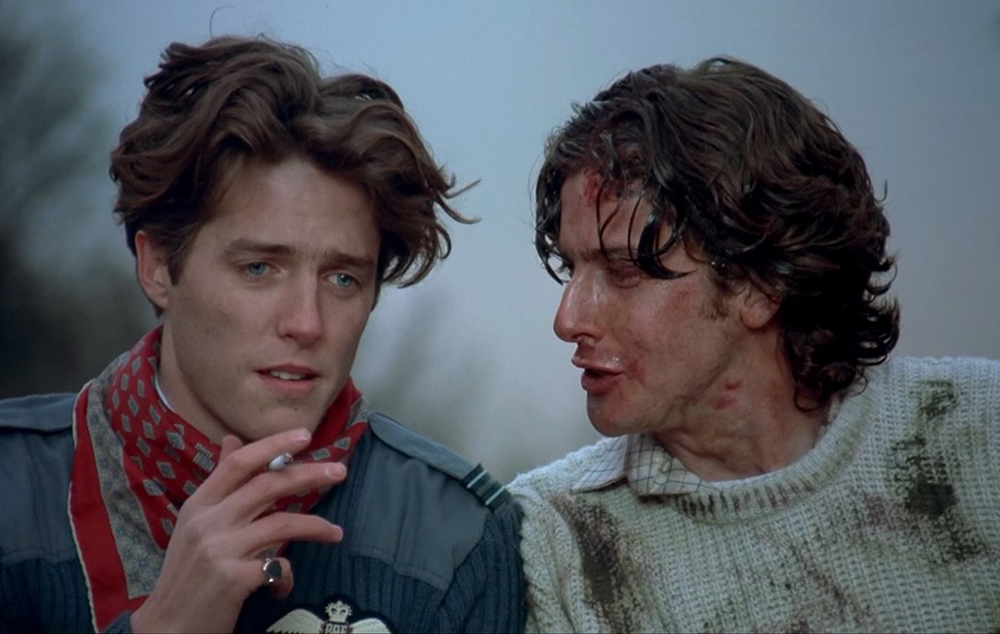The blend of horror and humor in Ken Russell’s “The Lair of the White Worm” goes too far in both directions, yet somehow it gels. Playing like a manic cross between “Death Becomes Her” (1992) and a snappy, innuendo-laced Old Hollywood classic like “His Girl Friday” (1940), Russell’s film has the audacity to charm the audience while appalling it, grossing us out while making us laugh. And just when the film promises not to take itself too seriously, Russellian trademarks surface: religious blasphemy, phallic imagery, sexual perversity. What a trifecta! It’s all quite fun, unapologetically British, and utterly unique compared to the average Halloween gorefest marketed this time of year.
Rehashing the plot would either alienate viewers or, depending on their taste, welcome fans of over-the-top horror fare. The key to understanding the film has less to do with accepting the narrative, and more to do with the absurdist proclivity of Writer/Director Russell, who adapted this screenplay from Bram Stoker’s novel. Russell (1927-2011) was a provocateur who didn’t tie himself to one genre or stock company of performers. He cast The Who, along with Elton John, Tina Turner, and Jack Nicholson in the rock opera, “Tommy” (1975). He played with sci-fi tropes in the enticing peculiarity “Altered States” (1980), featuring a pre-stardom William Hurt. Russell wasn’t shy to lampoon organized religion, most directly with his X-rated “The Devils” (1971). This latter starred the elegant Vanessa Redgrave as a sexually-repressed nun. While he wasn’t always in critics’ favor, his ambition to shock never wavered.
Diverging from Russell’s Taboo-breaking Habits
When “The Lair of the White Worm” diverges from Russell’s taboo-breaking habit, however, is when it shines. Lady Sylvia Marsh (Amanda Donohue) lives in a village with few neighbors, guarding a private mansion that borders the D’Ampton estate, overseen now by the overconfident Lord James (a baby-faced Hugh Grant). The two meet up after James pays a visit to inquire about the presence of snakes in the area. James retains an air of coyness, having already met with a curious and overmatched archaeologist (Angus, played by Peter Capaldi) who’s suspicious of the leather-clad Lady Sylvia. Angus’s mistrust is well-founded, though at this point only the audience knows Lady Sylvia’s misdeeds: breaking into Angus’s room, stealing a fossil, and, upon exiting, spewing a slimy green loogie on a crucifix.
After Lady Sylvia picks up a hitchhiker named Kevin (Chris Pitt). The two engage in some flirty and suggestive banter, evoking the kinds of battle of the sexes two-handers that Howard Hawks used to churn out. It’s not all romantic, though—Lady will soon claim Kevin as her first victim, and that’s when the story’s shape shifts (so does Lady Sylvia’s). I’m not familiar with the source material, so I can’t say how faithful Russell was to the book. Having seen the movie, I now feel like I need to read the book. There’s a disorienting combination of kooky and disturbing dream sequences. Russell seems intent on loading all the most controversial elements of his filmmaking universe—Jesus, orgies, violent nightmares—into the frame. Even if only some of that was loosely inspired by Bram Stoker, it’d be fascinating to see how those themes were rendered on the page.
Loosely Inspired by Bram Stoker; a Wild Ride

That Russell is repeating himself here is forgivable, since the camp factor elevates the horror scenes, and vice versa. The costumes, special effects, and character dialogue all seem plucked from different versions of his own films, with homage to a diverse range of inspirations: a little pre and post-Code Hollywood, some British folk horror, all wrought with care, and a ‘just-trust-me’ wink. It’s rare for an artist to attempt, and mostly succeed at deploying so many contradictions—laughs and scares, religion and paganism, cannibalism and whatever its opposite is—and here, Russell scores points for trying something that’s so outlandish, yet so completely in his comfort zone.
“The Lair of the White Worm” is currently available to stream on most platforms.
Support the Site: Consider becoming a sponsor to unlock exclusive, member-only content and help support The Movie Buff!